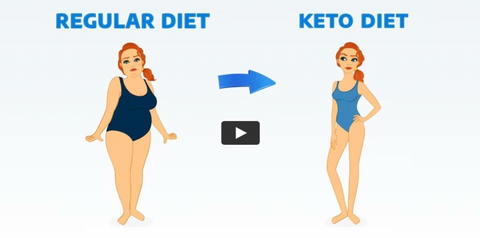There are countless diets out there, each with its own set of rules and promises. But what do they all have in common? They work by creating a calorie deficit or reducing the intake of specific food groups. Let's take a closer look at some of the most popular diets and how they work.
- Keto Diet
The ketogenic, or keto, diet is a low-carb, high-fat diet that aims to put the body into a state of ketosis. This is where the body switches from burning glucose for energy to burning fat instead. By drastically reducing carb intake and increasing fat intake, the body is forced to burn fat for energy, resulting in weight loss. Studies have also shown that the keto diet can improve blood sugar control and lower triglyceride levels.
- Intermittent Fasting
Intermittent fasting involves alternating periods of fasting with periods of eating. There are several different methods, but the most popular is the 16/8 method, where you fast for 16 hours and eat within an 8-hour window. By limiting the time you have to eat, you naturally eat fewer calories, resulting in weight loss. Intermittent fasting has also been shown to have other health benefits, such as improving insulin sensitivity and reducing inflammation.
- Paleo Diet
The paleo diet is based on the idea of eating like our ancestors did during the Paleolithic era. This means eating whole, unprocessed foods like meat, fish, fruits, and vegetables while avoiding processed foods, dairy, and grains. The paleo diet is rich in protein and fiber, which can help with weight loss and improve overall health. It has also been shown to improve blood sugar control and reduce inflammation.
- Low Fat Diet
The low-fat diet is based on the idea that reducing fat intake will result in weight loss. While it's true that fat contains more calories per gram than carbs or protein, not all fats are created equal. The key is to focus on healthy fats like those found in nuts, seeds, and avocado while avoiding saturated and trans fats found in fried foods and baked goods.
- Weight Watchers
Weight Watchers is a points-based system that assigns a point value to each food based on its calorie, fat, and fiber content. Members are given a certain number of points to eat each day, and they can choose how to use them. By focusing on portion control and choosing foods with lower point values, members can lose weight while still enjoying the foods they love.
- Sugar-Free Diet
The sugar-free diet involves avoiding added sugars, including those found in processed foods, baked goods, and sweetened beverages. While some natural sugars, like those found in fruit, are allowed, the goal is to reduce overall sugar intake. This can help with weight loss and improve overall health by reducing the risk of chronic diseases like diabetes and heart disease.
- Whole30
Whole30 is a 30-day program that involves eliminating all processed foods, grains, dairy, and added sugars. The goal is to reset your eating habits and identify any food sensitivities you may have. By focusing on whole, unprocessed foods, you can improve your overall health and potentially lose weight.
In conclusion, there are many different diets out there, but they all work by creating a calorie deficit or reducing the intake of specific food groups. The key is to find a diet that works for you and your lifestyle. Whether you choose keto, intermittent fasting, paleo, low fat, Weight Watchers, sugar-free, or Whole30, the most important thing is to focus on healthy, whole foods and listen to your body.
Would You Like to Know Exactly What to Eat to Lose Fat and Get Healthy Without Giving Up Your Favorite Foods or Starving Yourself? Watch this short video presentation to learn how:


